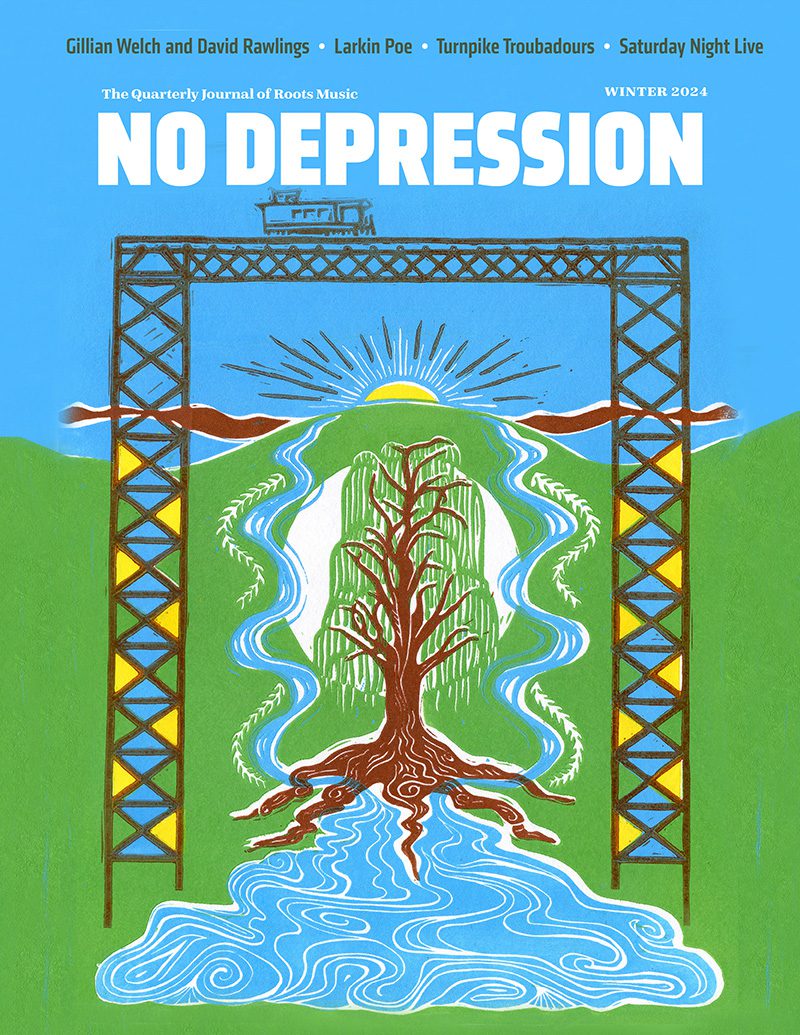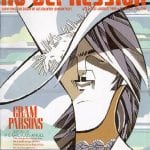Vince Bell – Survival of the fiercest
“This is 20 minutes before I was knocked into the decade of the ’90s,” Vince Bell says by way of foreshadowing as he slips a tape into the living-room stereo at his home just outside Nashville. The recording he has quite candidly volunteered to play for me on this cloudy spring afternoon is something I’ve been intensely curious about for five years, ever since I first heard Bell’s 1994 debut album Phoenix and learned of the staggering story that lurked behind the record’s creation.
To criminally condense a decade of struggle into a paragraph of summary: On December 21, 1982, Bell’s car was struck by a drunk driver in Austin, Texas, nearly killing him and inflicting injuries to his head, right arm, spinal cord and liver that drastically redirected his future. At the time of the collision, Bell was on his way home from a recording session for a demo tape that featured contributions from some of Austin’s finest musicians, including ace guitarists Eric Johnson and Stevie Ray Vaughan. Poised on the brink of a breakthrough in his musical career, Bell instead found himself poised on the brink of death, in the blink of an eye.
That story has been told many times in the past several years — most thoroughly and effectively in Bell’s self-published new book, One Man’s Music, which chronicles his long and arduous, yet heroically inspirational, road to recovery. But I’d always wondered about those fateful demo sessions — specifically, whether the recording process had ever gotten far enough along to produce anything resembling a final product.
The tape he plays as we’re winding down our hour-long interview provides the answer to that question. Though Bell’s vocals are just rough takes that were intended to be replaced later, they’re still solid enough that the three-song demo could easily pass for a finished recording. Musicians who at the time were playing with such folks as Christopher Cross, Carole King and Delbert McClinton lay down confident (if stereotypically ’80s-sounding) tracks behind Bell’s peppy, energetic vocals.
And, sure enough, wailing through the bridges of two songs are the inimitable styles of Johnson (on the first cut) and Vaughan (on the last one). As Stevie cranks it up a notch, soaring to the nether edges of the fretboard, Bell howls deliriously in wonder. “Whoooo! Smokin’,” he concludes, as the song rolls through the final verse and the tape player goes silent.
“Twenty minutes later, it’s over. What a decade.”
If Vince Bell’s story had stopped with the release of Phoenix five years ago, it would still rank as one of the greatest comeback triumphs of all time. As it is, however, that was just the first flower of his late-blooming career as a recording artist.
In April, Nashville-based Paladin Records, a small subsidiary of Warner Bros., picked up Bell’s second album, Texas Plates, shortly after he’d begun selling the disc independently via the internet. Produced by Robin Eaton and featuring musical support from accomplished players such as Al Perkins, Brad Jones, Mickey Grimm, Ross Rice and Maura O’Connell, Texas Plates continues where Phoenix left off, tastefully presenting Bell’s songs in acoustic arrangements that bring out the subtle magic of his carefully crafted lyrics.
Thematically, the album is loosely structured around Bell’s home state. A Houston native who starred at quarterback on his high school football team, Bell spent several years in Austin in the ’70s and ’80s and, after moving to California in 1990, returned to Texas for a four-year stint in Fredericksburg, a small town 90 miles west of Austin “out on the edge of the desert,” as he quite rightly describes it.
Texas Plates kicks off with “Poetry, Texas”, a song Bell wrote for his good friend and fellow songwriter Ray Wylie Hubbard. “You can tell where I am/By where I’m not,” Bell sings, echoing his comment in our interview that “the most lovely thing about Texas is what you find in the rearview mirror.” Which is another way of saying that absence makes the heart grow fonder: “Sometimes when I’m at home in Texas, it’s not near as impressive as it is when I’m sitting in New York City and I might be a little lonely or something. Then I can go, ‘Yeah, it’s a good ol’ place to be from,'” he explains.
Other songs reflect the spirit of the state through various ways and means. “2nd Street” deals with the day-to-day struggle for survival among homeless people who gather at a street corner in Austin every day, waiting for construction contractors to drive by and gather up a truckload of transients eager to work for whatever meager pay is offered. Bell knows whereof he sings: A chapter in One Man’s Music details his own attempt vying for work among the 2nd Street crowd during one of the bleaker stretches on his road to recovery in the ’80s.
The album’s most musically mesmerizing song, “100 Miles From Mexico”, is a mood-piece that conjures up the transcendent mysticism of deep, dark evenings in the heart of the Texas hill country. In a journal entry on his website, Bell distinctly recalls the moment that inspired this tune: “I’ll never forget driving over the Devil’s Backbone late one starry night with my guitar and a six pack of Pearl beer in the backseat, this song in my head, and a big, coral orange moon in the cloudless sky.”




